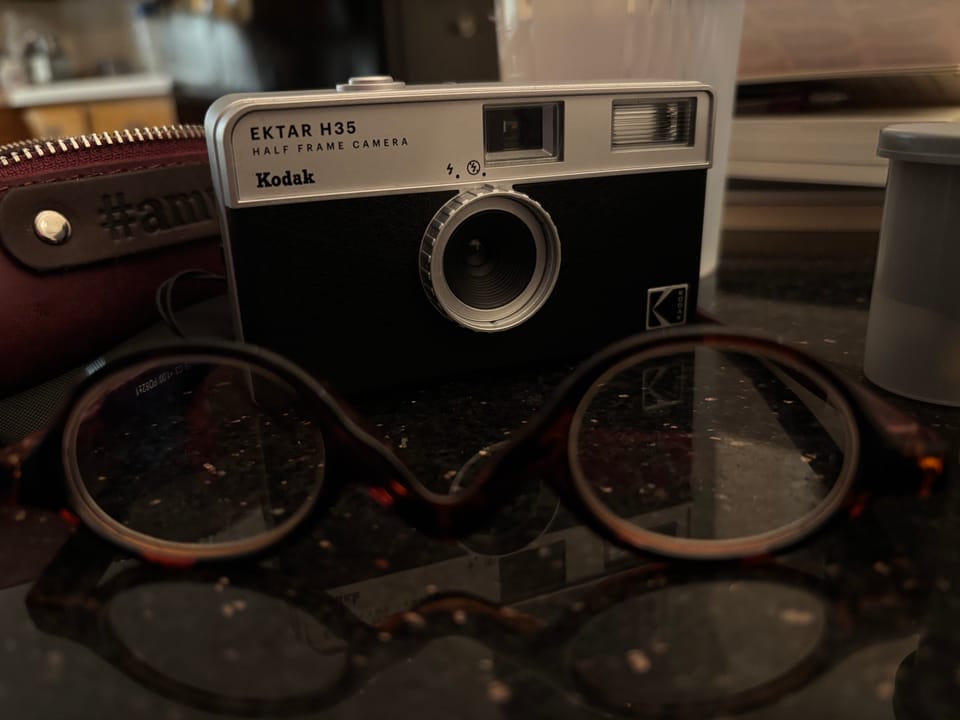four note friday 1.16 | Photovoice and Cameras

When preparing to start a photovoice project, lots of questions need answered. One such question is as follows: What kind of camera will participants/co-researchers use? On this day in the year 2025, the answer seems obvious: smartphone cameras. They are ubiquitous and easy to use. Point. Shoot. Upload. But is the obvious choice always the best choice? Probably not.
When photovoice was incepted in the early 1990s, smartphones did not exist, and digital photography was not yet mainstream. Simple film cameras were used during that very first photovoice project. And that made really good sense for the context and the participants.
Herein we see the point of this post. Answering the above question—What kind of camera will participants/co-researchers use?—requires deep and thoughtful consideration of the context of the study and the participants involved. It is also a question that should not be answered in isolation. In other words, ask the participants! Create a realistic menu for them to choose from—one that is based on the available resources for the project.
The choice of camera can shape the kinds of images created, the accessibility of the project, and how participants relate to the process (or not). There’s no single best choice here. Let's review (some of) our options and consider pros, cons, and some follow up questions that might need consideration.
Smartphone Cameras 📱
Smartphones are often the most accessible and familiar tools for participants. They make it easy to shoot, edit, and share images. They can reduce barriers because most people already have a smartphone and know how to use the embedded camera.
- Pros = quick and easy to use; socially acceptable; readily available; built-in editing and sharing; no or low cost
- Cons = participants' smartphone cameras will vary in quality, ease of use, and image transference processes; because of all the pros, participants may rush the process or complete image making without taking time to plan, reflect, or be intentional
- Follow up questions.
- Are screenshots photographs? Can screenshots be used for the project?
- Can/should photographs be edited? If yes, to what degree?
- How will the photographs be transferred from participants' phones?
Digital Cameras 📸
Digital cameras can offer greater control over focus, exposure, and depth of field. They can also be so complicated that using them becomes a barrier. Yet they can also set a tone of intentionality. Participants may take time to slow down when using a dedicated camera.
- Pros = if cameras are provided, all participants have a similar starting point for image making, which gives some consistency to the imagery of the project; high-quality images; flexible settings; separates project work from personal devices
- Cons = may require training; costly; data management and storage can be cumbersome
- Follow up questions.
- If available, does project funding include purchasing digital cameras? If yes, what happens to the cameras at the end of the project?
- What happens if a digital camera is lost or stolen?
- Are digital camera rental options available?
Film Cameras 🎞️
Film photography slows the process, encouraging thoughtfulness and reflection. Participants must consider each frame carefully, which can add depth to their engagement. There is no instant gratification here, and a sense of anticipation and excitement can build. Furthermore, analog processes are making a return to the mainstream! And there are many film camera options: disposable cameras, Holga cameras, half frame cameras, and more!
- Pros = encourages intentionality; interesting and unexpected results; creates anticipation and excitement
- Cons = social (un)acceptablity; may require training; film and processing costs; limited exposures
- Follow up questions.
- What kind of film camera should be used, and why? What training is needed to support participants/co-researchers?
- Where can I get film developed? And what are the associated costs?
- In addition to getting the film developed, are prints and/or digital scans also needed?
Instant Cameras 🏙️
Instant cameras have made a serious comeback and can generate an interesting and unique photographic object. They provide a tactile immediacy—participants can hold a photograph they made in their hands moments after taking it. This can make photovoice project photography sessions exciting and nostalgic.
- Pros = immediate and tangible results; fun and novel
- Cons = film may be expensive; inconsistent image quality; limited control over exposure and framing; cumbersome to digitize and/or enlarge; challenging to translate into an exhibition
- Follow up questions.
- What kind of instant cameras should be used, and why?
- What are the associated film costs?
- How will the instant photographs be used throughout the duration of the project?
Bonus = Camera Obscuras or Pinhole Cameras 📦
Simple and low-tech, pinhole cameras can be built from everyday materials like a cardboard box, paint can, or even a soda can. Making and using them can help participants explore seeing, framing, and image-making in new (actually, very old) ways. To date, I have not yet seen a photovoice project that relied on pinhole cameras, but that does not mean it isn't possible! If this kind of photography is new to you, check out this video to learn more!
There’s no one-size-fits-all answer to the question of which camera is best for photovoice. The best choice is the one that aligns best with the project and the participants involved. The real focus here should be anchoring project choices to the underpinnings and aims of photovoice.
🥹 Thanks for spending a moment with me this Friday.
💌 If you’re new here, welcome! I hope this space becomes one you look forward to each week.
📬 Have a question you want me to answer in a future issue? Reach me at photovoicefieldnotes@gmail.com. I'd love to hear from you.
Thanks for being here.
Warmly,
Mandy
photovoice field notes
photovoicefieldnotes.com
Member discussion